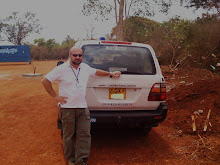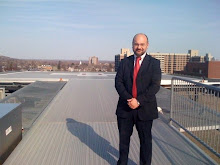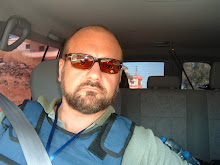 I visited Peru in February and March 2007 while conducting a Risk Security Assessment mission. The materials used to prepare this blog post have been updated and carefully reviewed in order to provide an idea about the actual security context in Peru.
I visited Peru in February and March 2007 while conducting a Risk Security Assessment mission. The materials used to prepare this blog post have been updated and carefully reviewed in order to provide an idea about the actual security context in Peru.Furthermore, driving schools often “sell” driving license without performing any practical exams or oral/written tests.
Kidnapping can be considered a high risk factor in Peru, above all for foreigners travelling in Peru.
Often the victim is forced to withdraw money from ATM machines, usually before and after midnight so that the cash amount is double as it refers to two days. The phenomenon is popularly called Millionaire Walking (Paseo Milionario). It is recommended to use secure taxi company before arriving in country. Local staff is required to attend to a specialized security awareness training in addition to the basic security training. This is primarily due to deal with the threat of kidnapping and being involved in a car accident in very remote areas with no communication and close medical facilities.
SECURITY SITUATION - THREAT ANALYSIS
President Alan Garcia is at his second mandate as president of Peru. People are slowly but steadily increasing their support of his administration since he is giving clear signs that he wants to do something concrete to help the poor conditions of his country. For example, he is the author of a law which will ask the major mine companies to pay a “volunteer contribute” (several million of dollars) to organizations involved in fighting hunger in Peru since the State program organizations waist up to 40% of the available resources. If those political actions will help Peru to improve or if this will be a barely cosmetic political move it is not clear.
There are still concerns over renewed insurgency activity from the Shining Path (SL) guerrilla group having them join the drug traffickers with their support in security.
The areas of biggest concern are, however, the common criminality and road accidents. Common criminality is widespread in the country with a peak level in the periphery of Lima. Law enforcement agents are not visible, and according to the official data, are not doing enough to fight this phenomenon. The second area of concern is related to car traffic and accidents. As said, there is a high risk of becoming a victim of a car accident, since there is little order and respect of road regulations. In Peru public transportation managed by government or local authorities does not exist, but it has been left to private companies and individuals. There is little control on authorizations and documents so that virtually anybody who owns a car or a minibus can be a taxi or public bus driver. Furthermore, a long time passes between vehicle technical inspections increasing the risk of mechanical breakdowns and incidents due to the lack of maintenance. The parliament has recently approved a law which forbids the importation of used cars older than five years. The high taxes to buy a new vehicle (50% of the price) have created a stagnant situation which do not facilitate the replacement of older models.

Author posing with a local community involved in an agriculture based project in the Handahuaylas area.
Peru’s relationship with the US has had a rocky past but is now close, particularly with large US funding for narcotics and security operations. However, many in Peru are critical of the US for failing to address fundamental trade and social problems within the country through their funding packages. There appears to be some credible information that international terrorists are present in the country but it is not known to which organization they belong; their activities seem to be linked with drugs, financing and false documentation.
The wave of internal terrorism, which Peru suffered in the 1980s and 1990s, has largely passed, but it has not completely disappeared. Remnants of the Shining Path (SP) movement (estimated at around 300 fighters and an unknown number of political activists) are still active in the Apurimac, Ene and Lower Huallaga Valleys. SP was responsible for the US embassy bombing in 2002. A group of terrorists also abducted gas pipeline workers near Toccate in the Ayacucho Department on 9th June 2003. In addition, the Garcia government, despite of his increasing popularity, remains disliked on basic reforms, which gives the potential for protests and strikes if the economic and social situation worsens. There have been recent protests by coca farmers over crop eradication by US-funded anti-narcotics operations and there are signs that the farmers are becoming increasingly militant in their opposition to the government’s support for US actions. In fact the project of restructuring coca plantations with other cultivations has given low results in terms of production and prices. The United Nations are also seen as a threat by the coca farmers and the SP who have an interest in coca production being the major security provider.







